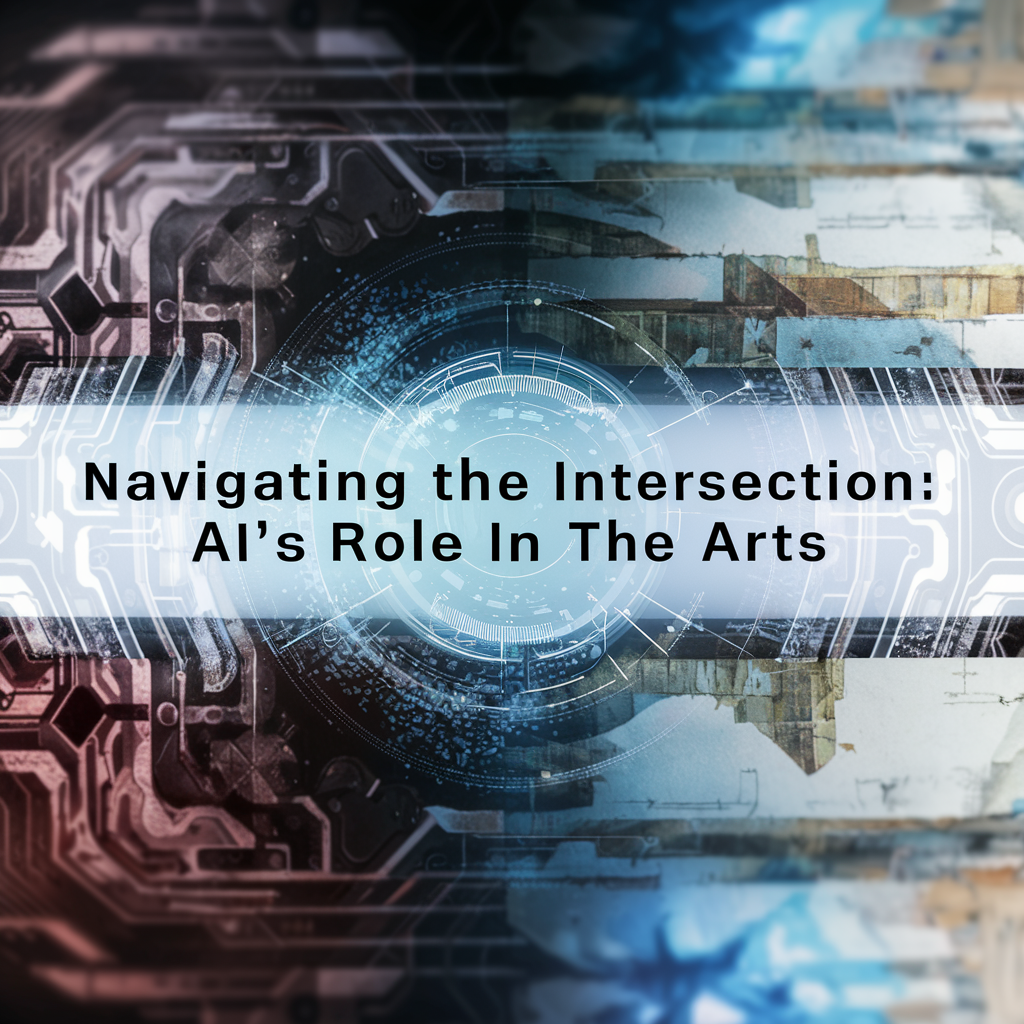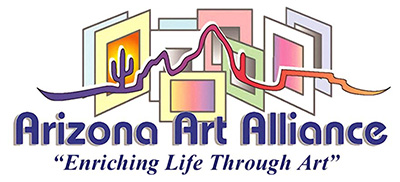Navigating the Intersection: AI’s Role in the Arts

In the contemporary art world, discussions surrounding Artificial Intelligence (AI) evoke a myriad of emotions – confusion, controversy, excitement, and, most notably, fear. The apprehensions often revolve around AI potentially replacing jobs, challenging the creativity of human artists, and becoming a competitor rather than a collaborator. While I can’t claim to have all the answers, I’ve embarked on a journey of research, contemplating the capabilities of AI and its potential impact on my work with the Arizona Art Alliance and my personal art practice.
At the nexus of tradition and innovation, we find ourselves in an age of technological advancement where AI emerges as a potent tool enriching the artistic process. From generative art to interactive installations, AI opens up unexplored territories, pushing the boundaries of creativity. Some artists readily embrace this technology, while others approach it cautiously, discerning its transformative potential in their artistic endeavors. In this article, we delve into the intersection where artistic expression and technological innovation converge, exploring insights gleaned from a recent presentation at Paradise Valley Community College.
Earlier this week, three artists – Alexis Fritz, ceramic artist; Bob Sadler, photographer; and Casey Farina, digital artist – shared their experiences of integrating AI into their artistic practices.
Alexis utilizes AI as a tool to explore and refine her initial ideas before creating a piece of art. Inputting prompts and refining them iteratively, she finds inspiring reference photos, akin to searching for references online or in books. The key distinction lies in AI serving as a reference rather than the final product.
Bob, a photographer, turned to AI during a period of ill health, generating images based on specific subjects and locations. Importing these images into Photoshop, he manipulated and enhanced them, infusing the final output with his unique artistic touch. Here, AI acts as a collaborator, providing a starting point for the artist to build upon.
Casey, a digital artist, writes code through AI to generate animations based on the repetition of movement. While AI assists with the initial creation, Casey’s strength lies in editing and revising to achieve his artistic vision efficiently.
These examples illustrate a common thread – AI as a tool, not the finished product.
The responses from artists towards AI vary, reflecting the natural reservations that arise when integrating new technologies into artistic practices. It is my belief that technology should complement, not overshadow, the artist’s vision. Through education and collaboration, we aim to demystify AI, fostering a dialogue between tradition and technology.
In the coming months, I will provide resources and a supportive environment for artists to explore the possibilities of AI. For those intrigued by incorporating AI into their art practice, I recommend experimenting with various tools like Idiogram.AI, ChapGPT, Google Gemini, MidJourney, Dall-E, Stable Diffusion, and Visual Electric.
Numerous articles and resources, such as Meaghan O’Gieblyn’s book, “God, Human, Animal, Machine,” delve into the complex relationship between AI and art, offering valuable insights.
As we look to the future, the canvas of infinite potential that AI offers in the visual arts becomes apparent. Arizona Art Alliance (AzAA) is committed to guiding artists through this transformative journey, encouraging exploration, experimentation, and the redefinition of creative boundaries. Our dedication to providing a platform where tradition and innovation converge remains unwavering.
Are you using AI in your art practice? Email me your experiences or recommendations. info@AzArtAlliance.com
This article marks the beginning of a multi-part series, inviting readers to join us on this exploration of AI’s influence in the arts.
